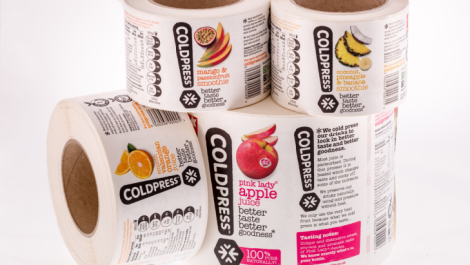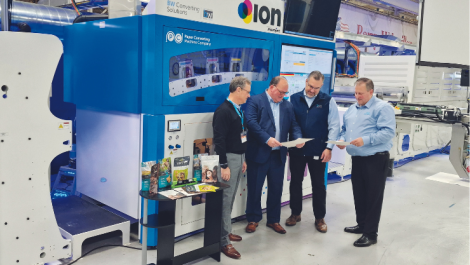With Digital Labels & Packaging reaffirming its position in 2022 as a go-to resource and invaluable tool for the entire supply chain, editor David Pittman asks some key friends and contacts for their thoughts on how buying and selling digital print for packaging has evolved over the course of their careers, as well as asking for tips to make sure all parties succeed in their negotiations.
So just how much has the buying and selling of digital print for packaging changed?
For Emma Winton, now on the supplier side with HP Indigo but who has experience at Ultimate Digital, ePac Flexible Packaging and CS Labels, ‘A lot has changed over the last few years, not only for packaging manufacturers, but also for brands and consumers.
‘Consumers are demanding more economical choices. As such, brands need more flexibility and control over their inventory whilst manufacturers need innovative solutions from their suppliers in order to support those new demands. The perception of digital printing has also changed; it’s becoming increasingly clear that digital print is a commodity that supports a full circle service to brands. This is something that has been strengthened by the pandemic, particularly in line with fluctuating demand across verticals.’
CS Labels sales director Paul Humpage says, ‘Customers are becoming more aware that digital print is not just for small print runs, along with the additional cost savings associated with set-up fees and plates associated with traditional printing methods. We are continually investing in the latest technology where print width and machine speed is blurring the differentiators between digital and conventional print.’
Mr Humpage sees the number of products printed digitally as having ‘increased dramatically’ over the past few years, to include, labels, flexible packaging, cartons and even coffee cups.
Andrew Mansfield, who is now responsible for new business development at Harkwell Labels but who has previously worked at CS Labels, A&A Labelling and Norprint, sees, ‘Buyers are starting to understand digital and what it offers, such as flexibility without the need to hold excessive stocks and reduced upfronts costs.’
To Michael Preston, business development manager at Springfield Solutions, the reality of the current climate has also contributed to changes in buying and selling.
‘Many buyers have transitioned from office working to remote working due to the pandemic, so we have had to change our approach and look at new ways of communicating and showcasing our services to buyers, including increased in-depth research of the background history of the company and the markets that they service.’
Do
When asked what should you do when selling digital print for packaging to brands/end users, Ms Winton says, ‘Understanding the audience and their objective is key. For example, if you’re dealing with SMEs and new start-ups, ensuring the process is simple to understand will be beneficial. It can be helpful to take the customer on the journey with you and walk them through the proceedings, asking them questions such as ‘What is being packed?’, ‘What is the biggest issue with your current packaging?’, ‘When do you plan to launch?’, etc. This will allow you to understand your customers past journey and future goals more broadly. This in turn leads to more extensive support and the ability to anticipate any future concerns.’
According to Mr Preston, ‘Most brands are looking for flexibility and a point of difference to help raise their profile or presence. So, using our digital print capabilities we are able to provide a service that can offer something outside the box for brands and consumers such as interactive packaging and digital premium labels.’
In Mr Humpage’s mind, ‘Selling digital has always been about selling a solution. Our digital journey started with lots of short print runs compared with our current delivery of increased order values and volumes as more customers are educated in what digital can offer. Proofing has never been easier, cheaper and more efficient, and is another main advantage to being able to sell on concept as it can transform a project rather than a customer be unsatisfied with a product that didn’t match their mind’s eye.’
He continues, ‘Ask questions and ask more questions. Understand the product and the motivations to buy. Ask for a brief and tailor this to what can be achieved digitally. Most importantly, set clear expectations with what can be achieved. We find understanding the technology a huge benefit, as if you don’t understand the limitations, it will catch you out.’
This is a view shared by Mr Mansfield, who makes clear that to succeed in selling digital, you must, ‘understand the capability of the equipment you are using.’
That’s sage advice if you’re the one doing the selling, but if you’re on the other side of the negotiation, what should you be doing and asking if you’re the buyer?
Digital print for packaging allows brands to change and evolve with fast-moving consumer trends, as Mr Preston advises, with new innovations in digital giving brands the benefit of shortened lead times and increased flexibility, and the ability quickly create a unique point of difference.
‘Brands should try to have an open mind when it comes to their packaging by looking at alternative options and appearances that can be achieved with digital print. The flexibility of digital print allows brands to experiment with variable data or embellishments to enhance their packaging.’
For Mr Mansfield, it is important to, ‘make sure the supplier understands what they are offering and their ability to supply it and capacity.’
‘As a brand purchasing digital print for packaging, communication is important,’ states Ms Winton, whose has also worked at brand owner Pipers Crisps. ‘This starts with interrogating the process right from the start and understanding the rationale behind taking this approach.
Asking questions such as whether anything should be done differently or could be done better, and how is the packaging being made can be helpful and informative for buyers. Buyers will also find comfort in being invited for an on-press approval, which will ensure potential issues such as colour matching are navigated. If something doesn’t look right in-person, the problem can be more efficiently rectified with the final product being approved in half the time.’
It is important for brands to factor packaging production into launch planning, advises Mr Humpage. ‘We see many projects where labels, pouches or cartons are left to the last minute as digital is known as quick turnaround, but often rushing without contingencies for customer changes can create delays that can impact the project in hand as well as production schedules.
‘The most successful projects are where we get involved at the artwork conception stage and those where the brand owner and designer understand the digital print process and what can be achieved with digital in mind. There are so many advantages to utilising digital elements in a design, many of which have no additional cost, so simply asking the question, ‘What else can be applied?’ or ‘How can we elevate this design?’, can deliver so many added values without additional cost. Digital print allows you to interact with your customer in a different way to conventional. If an end user looks at the product or interacts with the product for just a few seconds longer than a standard label then we’ve done our job properly.’
Do not
If we look at it from the other side, what should you not do if you’re selling digital print to brands/end users?
Mr Mansfield makes clear that it’s important not to oversell your offer. ‘Don’t say that digital can do everything, because it can’t. Educate and inform, show rather than force.’
Never use a hard sell method, advises Mr Preston. ‘Instead, try to listen to what experiences the customer has had previously. Most will only come to you if they have had previous issues with suppliers or are looking at the latest technology of which Springfield Solutions stay at the forefront of the latest equipment.’
For Ms Winton, ‘It is important to remember that not every buyer understands the process.’
This makes regular communication and transparency important to help manage expectations. She continues, ‘Talking through the choice of materials, discussions about artwork early in the process, and advice on how the final product will look on packaging, can mitigate concerns and the potential for disappointment. Vendors should act as consultants and guide the process, particularly if they can see a better way to achieve the results that customers want.’
‘Processing every single order without understanding the requirement, or customer can lead to problems,’ says Mr Humpage.
‘Look at what they’re asking for and check suitability. For example, if we get a request for a digitally printed flexible pouch for a food product and the customer has asked for a material with no barrier, we wouldn’t just accept the job, take their money and print it knowing it’s not fit for purpose.
‘Ultimately, the responsibility is with the customer to appropriately scope the job specifications, however it’s our job to offer consultative support. We want partnerships and to deliver the best solutions, not just to simply process jobs.’
What pitfalls should brand owners and end users be sure to avoid when buying digital print?
‘Try not to focus purely on price,’ says Mr Preston. ‘Instead, focus on the benefits of good service and support as well as innovation and flexibility.’
As the capability of digital is easily proven, Mr Mansfield advises, ‘Don’t buy if you’re unsure.’ Nor should you buy solely on price, suggests Mr Humpage, who also says, ‘Don’t leave it to the last minute.
‘If you are looking to print digitally use a digital specialist. We see it too often where a customer comes back to us after having been left disappointed with a digital product they have had printed elsewhere. This usually occurs when printing on demand via e-commerce, where there’s no human element to communicate with that understands the requirement and the technology used to create it.’
‘Digital print leaves brands with additional scope to really bring their product to life,’ opines Ms Winton. ‘Another important factor to consider is cost, as digital print allows for increased flexibility for buyers, including low volumes, multiple SKUs without plate costs, and fast turnaround. All of this leads to buyers having more control on cash flow, as well as better stock control and inventory. This allows end users the freedom to evolve their brands and product range.’
As Mr Humpage concludes, ‘Quality output needs quality input. If you are an established, emerging or new brand coming to market it’s key to ensure you work with a company that understands digital. Not all digital is the same, and there is a misconception that you simply send a file to the press and click print. That’s not the case. Find your fit who can grow as you grow, and wants to save you money whilst also increasing your added value.’
This article first appeared in the January/February 2022 issue of Digital Labels & Packaging; register here to receive the magazine






